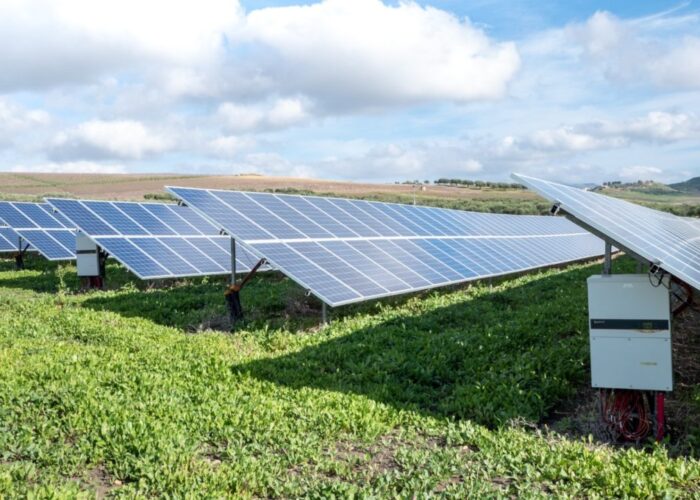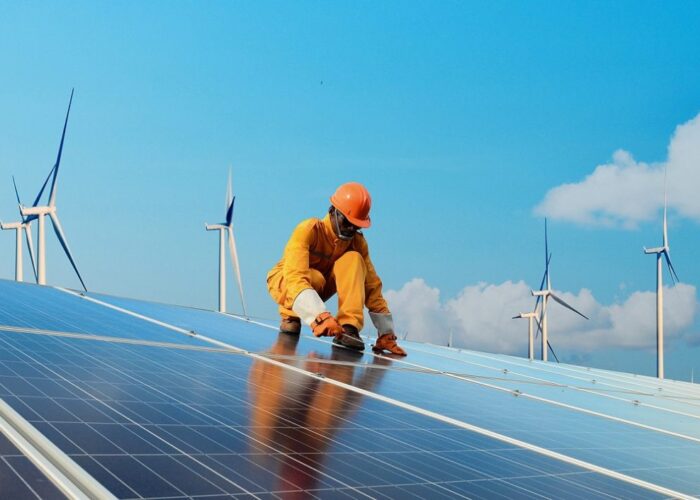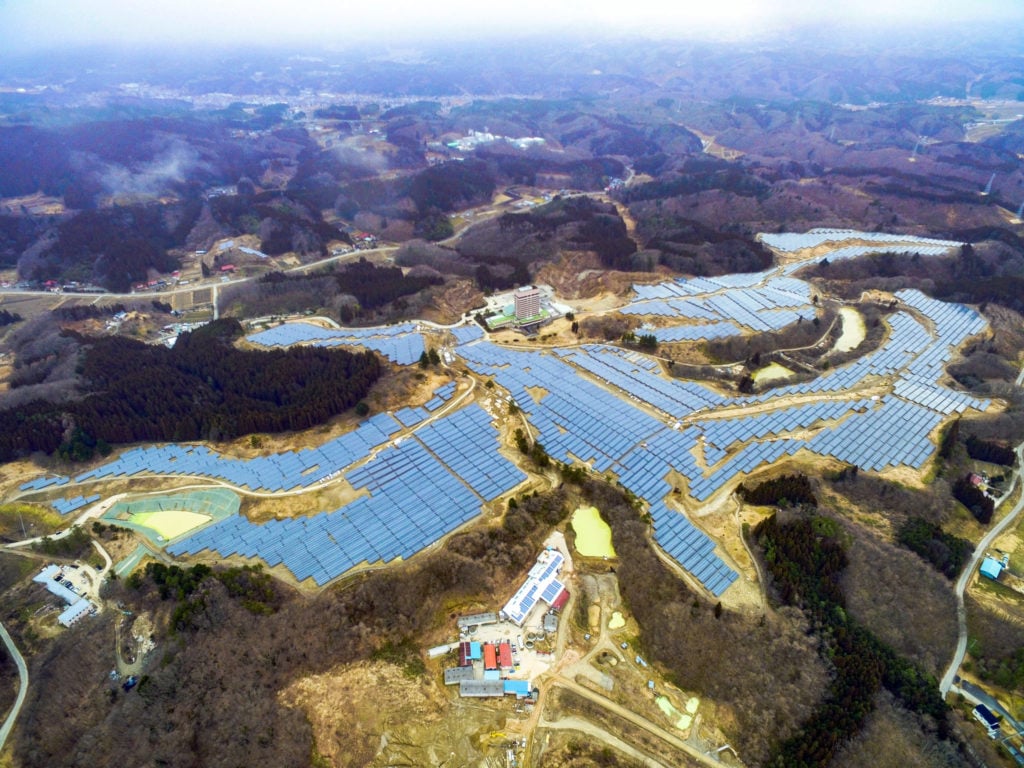
United Nations Secretary-General António Guterres said in November 2020 that the “science is clear”: failure to reduce greenhouse gas (GHG) emissions by 2030 by half and achieving net-zero emissions by 2050 worldwide will be catastrophic. The COVID-19 crisis will “pale in comparison to what the climate crisis holds in store,” Guterres said.
Speaking five years after the Paris Agreement, when a landmark consensus had been reached, the Secretary-General highlighted that the European Union, along with the United Kingdom, Japan and the Republic of Korea and more than 110 other countries had pledged to achieve carbon neutrality by 2050 and China by 2060. Since then, US President Joe Biden has brought his country back into the Paris Agreement too.
Unlock unlimited access for 12 whole months of distinctive global analysis
Photovoltaics International is now included.
- Regular insight and analysis of the industry’s biggest developments
- In-depth interviews with the industry’s leading figures
- Unlimited digital access to the PV Tech Power journal catalogue
- Unlimited digital access to the Photovoltaics International journal catalogue
- Access to more than 1,000 technical papers
- Discounts on Solar Media’s portfolio of events, in-person and virtual
Japan’s Prime Minister Yoshihide Suga made that pledge in October, like Biden making climate action one of his first big moves after taking office. Japan has embraced solar energy in the recent and not-so-recent past, initially in the 1970s following the OPEC oil price shock and then again from 2012, following the earthquake and tsunami that hit East Japan in March 2011.
The introduction of the feed-in tariff (FiT) in 2012 for solar PV at all scales with prices set originally in excess of ¥40 (US$0.38) per kW began a solar ‘gold rush’: according to government statistics, a total of 74.3GW of solar was approved under the regime, of which 68% (50.2GW) has been commissioned. The vast majority of projects below 2MW capacity approved have been built and connected to the grid already, for instance 97% of projects under <10kW — generally residential — have been built and between 70% and 80% of all projects between 10kW to 2MW capacity have been commissioned.
However, for PV plants of 2MW or more, 21.9GW of projects have been approved and only 42% commissioned (9.2GW). Tokyo-headquartered industry analysis firm RTS Corporation believes that much of the remaining 12.7GW is under development, but it is unclear what will definitely be built. So what are some of the challenges still facing large-scale solar PV developers today?
Winning over local stakeholders
It can take a lot of time to develop projects in Japan, Tomomichi Kageyama, representative director at Sonnedix Japan, says. European PV developer Sonnedix has more than 1GW of operational assets worldwide and opened its offices in Tokyo in 2013. It now has 250MW in operation in Japan. Kageyama says this is due to rapid development in 2020: at the end of 2019, Sonnedix Japan only had 56MW in operation.
Progress last year was partly down to a new strategy of acquiring projects under development. From the early stages, projects took longer than the company had expected, Kageyama says, with a “long, long journey” to obtain permitting.
“In Japan, local development matters are very challenging. In large scale infrastructure projects overseas, mostly those projects are supported by the national government of each country,” Tetsuya Oura, president and representative director for Baywa Japan says.
Oura developed and financed projects in various industries in Japan and internationally before joining Baywa a couple of years ago. Each country has fundamental risks, he says, but generally speaking there tends to be strong backing from central government for large projects.
“In Japan, the local stakeholders and private entities, they are very strong, they have strong rights. So in that sense, we need to get their consensus.”
Baywa was a relative latecomer to Japan, arriving in 2015. It commissioned and sold its first large-scale PV project in the country last year, an 11.9MW, 24 hectare solar park in Kyushu, southern Japan. This was quickly followed up by a 35MW larger project (pictured) as part of an initial 100MW pipeline.
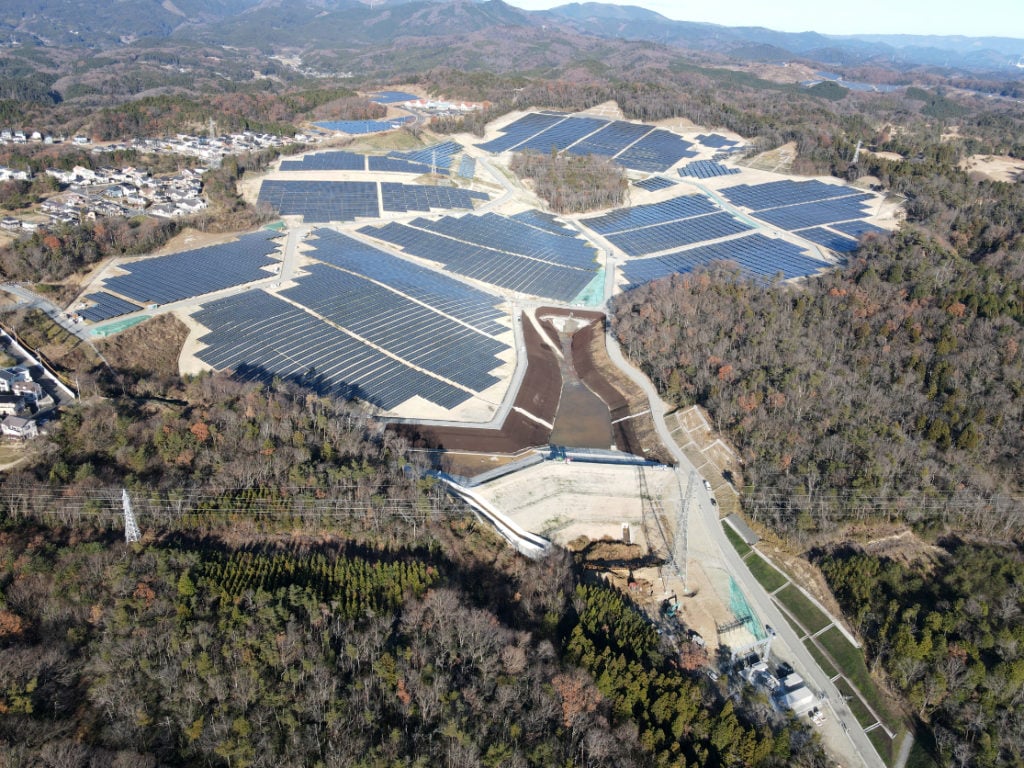
Market evolving to meet unique circumstances
Singapore-headquartered Vena Energy is active in eight countries across the Asia-Pacific renewable energy market. The independent power producer (IPP) has commissioned 450MW of large-scale PV since opening its Japan offices in 2013, doing everything from development to construction and operation of assets.
“Japan is quite unique in terms of site acquisition and permitting and construction,” Juan Mas Valor, country head for Vena Energy Japan says. “I’ve never seen the kind of constructions that we are doing here in Japan. Japan is a mountainous country and the flat areas are rice fields that we are not allowed to use. So we need to focus on [finding the right] areas,” Mas Valor says.
Juan Mas Valor has worked in Japan since 2013 and before that built PV plants in America and Europe. The Japanese market has evolved and matured, he says, with costs reduced significantly with scale, experience and competitiveness.
There has also been an “evolution of the players” too, Mas Valor says, from an industry “of a few pioneers” in 2013. Early on there weren’t many very large or institutional players involved but more and more have joined.
Policy has also evolved. The government has launched auctions for large-scale solar in place of the feed-in tariff. Vena Energy Japan won the biggest contract awarded in the most recent auction with a 68MW plant.
Unlike recent auctions in other countries, they have not been heavily oversubscribed. The government has set ceiling prices and had some success in lowering costs. Analysis firm RTS Corporation noted that the average winning bid price was ¥11.34 in the November tender, held for systems with 250kW capacity or more.
“The last auction was in the range of ¥11 and we will see this going down. Solar is going to be the most competitive technology, so naturally the country will adopt more and more this clean technology because on top it is also cost-effective,” Juan Mas Valor says.
At the beginning the incentive of the high FiT was needed to attract both local and international investment. Japan did a very good job with that and “now the machine is working,” Mas Valor says.
Nonetheless, the auctions have presented challenges. Not just the ceiling prices or the price competition, but also in the requirement to secure grid connections and suitable land before participating in auctions, which are for projects of 250kW capacity or more. Projects over 30MW need to show progress in the environmental impact assessment process. A deposit needs to be placed before the auction and another placed after winning. All of these things could be barriers to companies taking part, Juan Mas Valor says.
Neither Sonnedix Japan and Baywa Japan have entered the auctions, with Sonnedix’s Kageyama saying that the company has not ruled out investing time and money in the tenders but that finding land and meeting other criteria “is not easy”.
The projects Sonnedix Japan acquired in 2020 are all high FiT-level projects awarded in past years. That type of project still represents a “meaningful investment” for the company, Kageyama says, and a number of development assets Sonnedix is working to acquire are also high tariff projects.
Tetsuya Oura confirmed that Baywa is also still working on a pipeline of FiT projects. The auction scheme itself will soon be phased out, with the replacement regime, called the feed-in premium, still a work in progress. There is also expected to be a greater tendency towards corporate power purchase agreements (PPAs) and even PPAs signed directly with local authorities.
All of our interviewees are enthusiastic about the idea of signing long-term corporate PPAs. Equally, PPAs with local authorities could be a good option, they say, although this will require further regulatory reform.
150GW by 2030?
Ahead of the 2050 carbon neutral target, the country is expected to introduce a higher interim renewable energy target for 2030 than the 22% – 24% goal currently in place. Environment Minister Shinjiro Koizumi said last year that it could be upped to 40% in the next national Strategic Energy Plan and while onshore and offshore wind will start contributing a higher proportion than the minimal or non-existent amount they do now, solar PV looks likely to continue to dominate.
RTS Corporation says that around 8GW of solar was deployed in Japan in 2020, with cumulative installs at all scales coming in at around 70GW. In fact, the analysis firm pointed out in a webinar last year that the 2030 PV capacity target in existing national renewable energy goals, about 64GW, was surpassed at some point between 2019 and 2020.
A more ambitious new target that RTS believes is achievable and would contribute meaningfully to full decarbonisation or carbon neutrality would be 150GW by 2030. From the company’s modelling of the market, even a business-as-usual scenario would see Japan achieve around 130GW by 2030 and under an ‘accelerated scenario’ could go to 160GW.
Minister of Economy, Trade and Industry Hiroshi Kajiyama said last year that the country will work to maximise renewable energy and nuclear and in future will support new options like hydrogen. There is also an expectation that some regulations on land use and permitting will be relaxed, allowing development of solar and wind on abandoned agricultural land and some National Parks.
“There’s so many ways to increase capacity for renewables, especially for solar,” Sonnedix Japan’s Tomomichi Kageyama says. “In recent years, the government didn’t look like they are clearly facilitating renewables. In the last few years, they’ve made many changes in FiT law and also [introduced] some regulations against solar because they have concerns that too much increased investment for solar and an increase in subsidies would be too much [of a] burden for the population [to pay].”
Juan Mas Valor says that Vena Energy Japan’s portfolio of projects with FiT contracts is expected to be finalised and “many projects are under construction now already”. Being able to develop new projects is going to be important, he says.
“We want to continue helping Japan to reach the targets of zero carbon. So the focus is to continue developing new projects. Already METI is talking about new business models, for example, with FIP structure. We are here for the long term — we are here to continue supporting Japan in the aspect of renewable energy, so we need to continue developing projects.”
The feed-in premium is expected to be a contract structure that will pay a certain top-up on prices that generators can get from the wholesale market or from PPAs, rather than a high fixed rate for kilowatts installed that a feed-in tariff is. Mas Valor says that with “a lot of discussions” underway, the industry is getting “more and more information of how it will end up”. While it isn’t therefore exactly clear what the policy will look like, Vena Energy Japan will be “happy to continue developing projects with these [new] schemes,” he says.
Support doesn’t have to mean direct subsidies, it can also mean changing or updating rules and regulations to enable positive changes. Sonnedix Japan’s Kageyama says that the rigidity of the FiT scheme structure prevents companies for example from changing modules installed at a site for newer, larger components with greater yield and efficiency.
“In a FiT scheme, we cannot increase the capacity [of a solar plant]. Because if we increase the capacity of the higher tariff site, we will get more benefit. But a lot of technology has improved.” The capacity of electricity that a single PV module can produce has changed a lot since the FiT launched more than eight and a half years ago. Even the wholesale price for power from the expanded portion of capacity would be enough of an incentive to “repower” or “upgrade” plants in this way.
Resolving the grid capacity issue
The lack of available grid capacity is a big technical and development challenge for large-scale solar developers in Japan. For Sonnedix Japan it’s the main challenge when it comes to finding new projects and Kageyama says that again, changing regulations around that could help.
“It’s been said that there’s actually ample capacity already, but in case of emergencies, quite a big amount of capacity is unused. There is also the capacity needed for nuclear plants which are not operating now (since Fukushima most of Japan’s fleet of nuclear plants have been shuttered) but they need capacity for that.”
Baywa Japan’s Tetsuya Oura says that most of Japan’s 11 regional grid operators — who are also Japan’s regional monopoly utility providers — do at least show how much grid capacity is available on maps. However each utility uses different methodologies to calculate capacities. He says it is positive that the government is leading initiatives to improve transparency and the situation could be resolved by cooperation between policymakers, utilities and the renewables industry.
Vena Energy’s Juan Mas Valor agrees that there are a “lot of constraints on the grid” that “block the possibility of developing more projects”. He too is aware that METI is working to change that situation, including the cancellation of FiT contracts for planned solar projects that look unlikely to proceed but for which grid capacity has been reserved. In the last year or so “several countermeasures” have been discussed to try to solve the problem, but it will take some time to see the impact.
Vena Energy is also already installing bifacial modules at projects in Japan, which again can improve generation. Sonnedix Japan and Baywa haven’t used bifacial modules at their projects in the country yet, but both are actively looking at the technology for future projects. Baywa Japan’s chief operating officer, Jean-Francois Rebeille, says that a project where they will be used hasn’t been “firmed up yet,” but it is “definitely on the table for some configurations that we have”.
“The size, and the module type is quite dynamic, we always look for the latest, best choice in terms of performance and cost trade-off. The assumption you make when you start the project, and then the actual panels that you end up selecting and buying and installing can be quite different. The development cycle can take a couple of years. We pick the best technology at the time that we have to place an order, and that can include bifacial — we use those on a global basis as well.”
Rebeille said that Baywa is also keen to investigate opportunities for floating solar: “Japan has already done a number of things in floating PV. There’s still bodies of water out there that are available. Whether for standalone development or related to an industrial site that might have a pond or some kind of reservoir associated with their activity. Size-wise, we’re not talking about ‘Megasolar’, tens of megawatts type of configurations, although there could be some fairly good sized projects.”
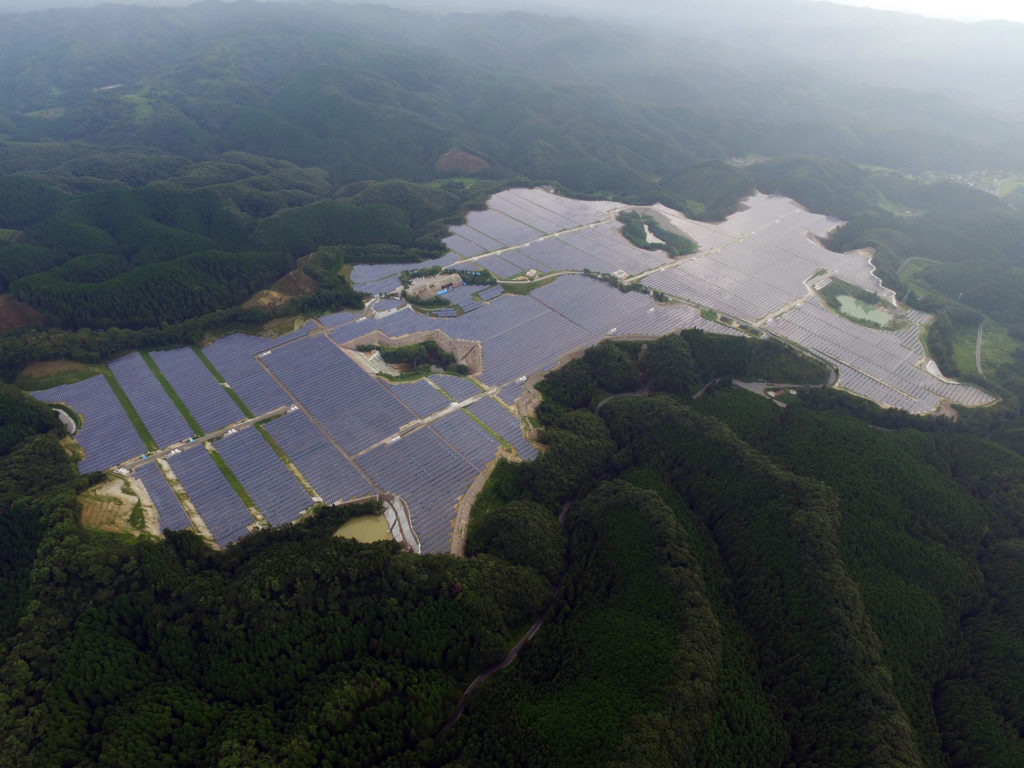
Battery storage’s role in the future
Battery storage is likely to play a greater role in the future. There aren’t market opportunities for batteries to provide frequency regulation and other ancillary services yet, although Baywa’s Jean-Francois Rebeille believes this will change, depending on what grid operators require. He also sees hybrid renewables and storage projects as a “holistic” answer to many of the challenges of growing the renewable contribution to the energy mix, whether solar or wind.
“There’s going to be more and more discussion around, you’re putting in renewables, but can you store the energy when you’re not using it or so you can you can release it when you need it? It’s still early stages: a lot of things need to happen in Japan to accelerate that transformation. But for us, we’re convinced that storage is going to be part of what we are going to have to offer.”
Sonnedix Japan’s Tomomichi Kageyama says that energy storage “could be a driver for the next phase” of large-scale solar in Japan. At the moment, battery storage costs are still considered quite high and the only part of the country that has mandated any form of storage for renewables is the northern island of Hokkaido, which has a congested grid and only limited interconnection with the rest of the country.
“We have to think about the investment, we need to make sure that investment has good return,” Kageyama says. Storage costs are not that “reasonable or cheap” yet and mandatory requirements for storage do not make investment more profitable. However, he says, Sonnedix Japan also expects — and hopes — to be installing energy storage in Japan.
Vena Energy is building a 150MW battery project in South Australia which, Juan Mas Valor says, the Japan team will be watching closely. The business case for storage is already present in Australia, he says, with greater immediate need for ancillary grid services. Japan too, will get to that point soon as the penetration of renewables goes up.
Baywa’s Jean-François Rebeille says that curtailment of renewables could become a bigger issue that energy storage could resolve too. “We’ll have to see what the picture is in terms of curtailment. That’s where it can mean storage gives you the ability to store energy and return it to the grid at the right time. Curtailment can be quite a significant factor to consider.”
Commitment for the long-term
Solar will need to play a major role in Japan’s carbon neutrality goals. Prime Minister Yoshihide Suga and other government ministers have also acknowledged, as has been the case with the EU and the Biden-Harris Administration in the US, the low-carbon transition as a major driver of economic activity. All of our interviewees are in Japan to do business long-term and want to continue contributing to those goals, engage with local communities, open local offices and train local staff.
“Not only government initiatives, but also the ambitions of the corporate sector, are the keys,” Baywa’s Tetsuya Oura says.
“We are now observing more and more firms showing the willingness to be green and to join the RE100. More and more companies have contacted us to discuss the possibility of our support in their renewable energy shift. There are many companies willing to increase the renewable energy usage but they are not familiar with the development or construction of the project itself. In that sense, they will outsource the development of innovative projects to ‘outsiders’ like ourselves. That is a core part of our future activities we’re thinking about.”
Jean-Francois Rebeille says that Baywa is convinced that Japan’s government, corporates and other stakeholders realise solar needs to play a big part in the national energy transition. Increasing the national renewable energy target to 40% will count on offshore wind starting to contribute, but this is a “heavy, long-term effort,” while deploying solar is relatively quick and cheap. People are now carefully monitoring, he says, how the different stakeholders will approach questions such as access to land, competitive costs and the design of appropriate corporate PPA structures.
“Vena Energy came here to Japan in 2013, to stay for a long time. We are a long term player. we have proved this with the large amount of projects that we have managed to develop, build and operate,” Juan Mas Valor says.
“Last thing but not least, we always believe in supporting the local communities. Wherever we go and build projects, we ensure that we go to the communities and if they need something, we are helping them.”





